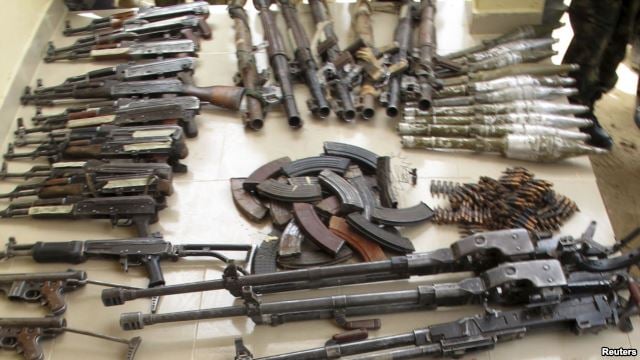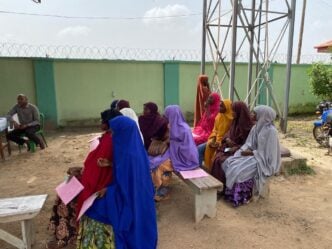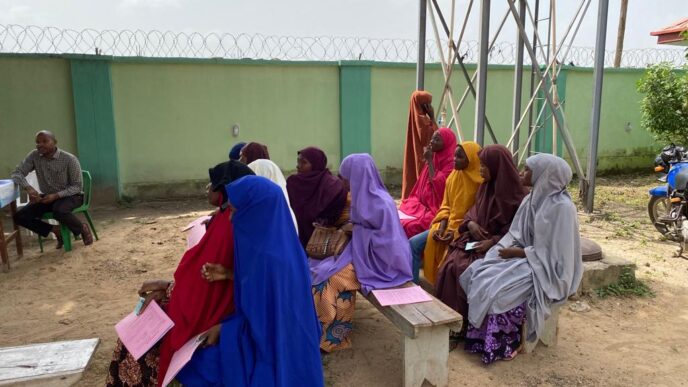BY REDZIE JUGO
Nigeria’s persistent security challenges, particularly in Plateau state, represent a profound governance failure spanning multiple administrations. The recurring pattern of violence against vulnerable rural communities raises serious questions about the federal government’s capacity and commitment to fulfilling its most fundamental responsibility: protecting citizens’ lives and property.
For decades, communities in Nigeria’s Middle Belt have endured systematic attacks with devastating consequences. The patterns of these assaults are disturbingly predictable, yet successive governments have failed to implement effective preventative measures or deliver justice to victims. The nocturnal attacks on poor helpless Nigerian citizens in Kwall village in Plateau state, and Otobi community in Benue State, are a testament to a recurring decimal and the predictability of the same. This persistent inability to secure vulnerable populations points to deeper institutional weaknesses that transcend individual administrations and political parties.
This article examines the systematic failures in addressing these attacks, analyses Nigeria’s current firearms regulatory framework under the Firearms Act (Cap F28 Laws of the Federation of Nigeria 2004), and explores policy alternatives that might empower communities for self-protection when government security forces repeatedly fail to intervene effectively.
Advertisement
Plateau state: A legacy of institutional failure
The Middle Belt region, particularly Plateau, represents a complex convergence of ethnic, religious, and economic tensions that have periodically erupted into violence since Nigeria’s independence. What distinguishes the current crisis from historical intergroup conflicts is the evolution from spontaneous clashes to what appears to be coordinated, military-style assaults on specific communities.
These attacks follow disturbing patterns that have remained consistent for years:
Advertisement
Systemic neglect: Attacks on farming communities (e.g., Bassa, Barkin Ladi, Bokkos, Mangu etc) follow a grim pattern: midnight raids, mass killings, and arson. Perpetrators vanish before security forces respond.
Nighttime assaults: Most attacks occur between midnight and dawn when visibility is poor and community members are sleeping, maximizing casualties and minimising defensive capabilities.
Multi-directional approaches: Attackers frequently surround villages before launching coordinated assaults from multiple directions, cutting off escape routes.
Communication disruption: Before many attacks, telecommunication services mysteriously fail or become unreliable, preventing victims from calling for help.
Advertisement
Extended duration: Assailants often operate unopposed for hours, methodically moving from house to house despite authorities being aware of ongoing attacks.
Proximity to security bases: Reports indicate that many attacks occur within 10km of military bases, yet troops arrive too late to intervene effectively.
Government response failures
Delayed intervention: Security forces regularly arrive hours after attacks begin, often after attackers have already departed, despite distress calls from community members.
Advertisement
Intelligence failures: Despite recurring patterns, security agencies demonstrate a persistent inability to gather or act upon intelligence that could prevent impending attacks.
Inadequate post-attack investigations: Few perpetrators are ever identified, apprehended, or prosecuted, creating a culture of impunity that emboldens further violence.
Advertisement
Temporary security deployments: Post-attack security deployments are typically withdrawn after short periods, leaving communities vulnerable to follow-up attacks that often occur weeks or months later.
Political narratives over action: Government communications frequently emphasise political narratives and blame-shifting rather than actionable security strategies.
Advertisement
Humanitarian crisis
The ongoing violence has created a devastating humanitarian crisis across Plateau state: Numerous villages have been completely displaced, creating internal refugee situations; Agricultural productivity has plummeted in what was once considered part of Nigeria’s “food basket”; and survivors face severe trauma with minimal psychological support services.
Advertisement
Educational systems and healthcare delivery have collapsed in many affected areas, economic activities have been disrupted, deepening poverty and vulnerability. This comprehensive failure of state responsibility creates a devastating cycle where communities are attacked, security forces respond too late, perpetrators escape without consequences, survivors receive inadequate support, and the cycle repeats with new attacks.
Critical evaluation of Nigeria’s current firearms legislation
Nigeria’s approach to firearms regulation is governed primarily by the Firearms Act (Cap F28 Laws of the Federation of Nigeria 2004), a legislative framework that has remained largely unchanged despite dramatic transformations in the country’s security landscape. This act establishes a highly restrictive regulatory regime that effectively prevents law-abiding citizens from legally possessing firearms for self-defence while failing to prevent illegal weapons proliferation among criminal elements.
Key Provisions of the Firearms Act
The Act divides firearms into categories with varying degrees of restriction:
Personal Firearms (Section 3): Technically allows for civilian ownership of certain firearms through licensing, but with stringent requirements including:
- Approval from the Inspector-General of Police or delegated authority
- Proof of “good reason” for possession, which is subjectively interpreted
- Character references and background checks
- Payment of licensing fees
- Regular renewal requirements
Prohibited Firearms (Section 5): Bans possession of military-grade weapons, including automatic rifles, which is appropriate but creates significant power asymmetry when attackers frequently possess such weapons while communities cannot legally defend themselves even with less powerful firearms.
Muzzle-Loading Firearms (Section 4): Allows for somewhat easier licensing of traditional firearms, but these weapons provide limited defensive capability against modern arms used by attackers. In some instances, these villagers are in possession of inefficient, cumbersome one-shot, hunting Dane guns while their assailants are wielding automatic and semi-automatic weapons; the most popular being the AK-47.
Implementation failures and practical realities
While the legislative framework theoretically permits firearms ownership through proper licensing, the practical implementation creates insurmountable barriers for most Nigerians, particularly those in vulnerable rural communities:
Elite bias: Licenses are disproportionately issued to politicians and private security firms, with rural communities receiving only a tiny fraction of approvals despite facing the greatest security threats.
Administrative barriers: The licensing process is complex, opaque, and often subject to corruption or favouritism. Urban elites and politically connected individuals can navigate these barriers, while rural communities, who face the greatest security threats, cannot.
Discretionary authority: Licensing decisions rest on subjective assessments of whether an applicant has “good reason” to possess a firearm. Security threats to rural communities are rarely considered sufficient reason despite documented patterns of attacks.
Prohibitive costs: The combined costs of licensing fees, required training, and the firearms themselves place legal ownership beyond the financial reach of most rural communities.
Urban-centric process: Licensing procedures require multiple visits to police headquarters in urban centres, imposing practical barriers for rural applicants who may need to travel long distances.
Ineffective enforcement: While legal ownership remains nearly impossible for ordinary citizens, Nigeria simultaneously struggles to control illegal weapons trafficking. This creates a situation where law-abiding citizens remain unarmed while criminals face few practical barriers to acquiring weapons.
Legal self-defence provisions
Section 33(2)(a) of the Nigerian Constitution recognizes the right to self-defense, stating that a person shall not be regarded as having been deprived of his life if he dies as a result of the use of force that is reasonably necessary “for the defense of any person from unlawful violence.” However, this constitutional principle is undermined by firearms regulations that prevent citizens from possessing effective means for such defence.
The Firearms Act contains provisions that theoretically allow for personal and community protection through legal ownership, but the implementation of these provisions has failed to reflect the reality of Nigeria’s security challenges. While the law provides a framework for regulatory reform, the current application effectively disarms the most vulnerable communities while leaving them exposed to armed attacks.
Comparative analysis with other countries’ self-defence laws
Nigeria’s approach to firearms regulation stands in contrast to various international models that have developed more balanced frameworks acknowledging both public safety concerns and citizens’ self-defence needs, particularly in areas where state security provision is inadequate.
Czech Republic
The Czech Republic maintains a regulated approach to firearms ownership that balances self-defence rights with public safety:
∙ Citizens can own firearms for self-defence after passing psychological exams and completing thorough training programs
∙ Despite a relatively high gun ownership rate (8.2%), the Czech Republic maintains lower homicide rates than countries with more restrictive regulations
∙ The system emphasises comprehensive vetting and training rather than blanket prohibitions
Israel
Israel has developed a community-based security approach that may offer relevant insights for Nigeria’s vulnerable communities:
∙ Licensed firearm ownership is permitted for citizens in high-risk areas (e.g., border towns), reducing vulnerability to attacks
∙ Community security committees receive training, equipment, and oversight from state security forces
∙ The system maintains formal relationships with state security institutions, ensuring accountability and preventing the emergence of unregulated militias
Finland
Finland’s approach to rural firearms ownership provides another instructive model:
∙ Hunters and rural residents undergo mandatory training to own rifles, fostering community resilience
∙ The system recognises the different security needs of rural versus urban populations
∙ Strong regulatory frameworks prevent misuse while acknowledging legitimate needs for self-protection
These international examples demonstrate that firearms regulation need not present a binary choice between complete restriction and unregulated access. Rather, thoughtful regulatory frameworks can balance legitimate safety concerns with recognition of citizens’ needs for protection when state security proves inadequate. The lesson for Nigeria is clear: regulation, not prohibition, can balance citizen safety with public order.
A reformed Firearms Act: Recommendations for Nigeria
The persistent failure of government security forces to protect vulnerable communities in Plateau State and throughout Nigeria’s Middle Belt presents a compelling case for reconsidering the country’s approach to firearms regulation. This is not an argument for unregulated proliferation of weapons, but rather for a thoughtful reform process that acknowledges both the risks of firearms and the reality that current policies leave communities defenceless against predictable threats.
1. Legalise community self-defence
∙ Create a “Community Protection License”: Amend Section 3 of the Firearms Act to establish a new category of licensing specifically designed for vulnerable communities with documented security threats. This would allow villages to collectively own defensive firearms under the oversight of traditional leadership structures.
∙ State-Level Licensing Authority: Devolve certain licensing powers to state governors for high-risk zones like Plateau State. This would expedite the approval process for communities facing imminent threats while maintaining appropriate oversight.
∙ Rural-Focused Implementation: Develop mobile licensing and training units that can reach isolated communities, removing the urban-centric barriers that currently exist in the licensing process.
2. Establish comprehensive safeguards
∙ Background Checks: Partner with the National Identity Management Commission (NIMC) to implement thorough vetting procedures for all applicants.
∙ Mandatory Training Programs: Require extensive firearms safety, legal, and operational training for all license holders, with specialised programs for community defence structures.
∙ Secure Storage Requirements: Implement strict regulations for weapon storage in community armouries with multiple security protocols to prevent misuse.
∙ Regular Certification and Review: Require periodic recertification and review of all licenses to ensure ongoing compliance with safety standards.
3. Modernise enforcement mechanisms
∙ Weapon Tracking Systems: Deploy digital tracking systems to monitor legal arms and identify unauthorised transfers or usage.
∙ Enhanced Penalties for Trafficking: Implement significantly harsher penalties for illegal arms trafficking, mirroring approaches taken in countries like Kenya.
∙ Border Security Focus: Redirect resources toward controlling arms smuggling at Nigeria’s porous borders rather than primarily restricting legal ownership.
4. Integrate with existing security frameworks
∙ Formalise vigilante groups: Provide legal recognition and oversight to existing community security initiatives like Operation Rainbow in Plateau State. The argument for state police should be revisited. The advantages of having state-owned and run security agencies far outweigh the disadvantages, as has been shown time and again.
∙ Security Force Coordination: Establish clear protocols for communication and coordination between community defence structures and formal security forces.
∙ Graduated Response Systems: Develop tiered response frameworks that clearly define the roles and limitations of community defence forces.
5. Community accountability structures
∙ Local Oversight Committees: Establish community-level accountability boards that include traditional leaders, women’s representatives, youth leaders, and security professionals. Every state of the federation has a mix of retired security agents and serving ones who have insight into the security challenges that abound. This valuable resource should not be allowed to go untapped.
∙ Transparent Reporting Systems: Implement requirements for regular reporting and documentation of all security incidents and responses.
∙ Conflict Resolution Mechanisms: Develop local-level conflict resolution structures to address disputes before they escalate to violence.
Addressing potential concerns
Any proposal to reform firearms regulations must address legitimate concerns about potential negative consequences:
Concern: Arms proliferation could exacerbate violence
Response: Carefully structured reforms would channel currently unmet security needs through regulated pathways rather than driving them underground. The current system has failed to prevent criminals from acquiring weapons while leaving law-abiding communities defenceless.
Concern: Community defence groups could become militias
Response: International examples demonstrate that proper training, clear legal frameworks, and formal relationships with security forces can prevent this outcome. The proposed reforms emphasise accountability and integration with existing security structures.
Concern: Firearms access could increase accidents or misuse
Response: Mandatory comprehensive training, secure storage requirements, and community-level accountability mechanisms would mitigate these risks. The focus would be on community defence structures rather than unregulated individual ownership.
Concern: Reforms could undermine government authority
Response: Properly implemented, these reforms would strengthen the state’s legitimacy by acknowledging reality and providing regulated alternatives to the current situation where communities increasingly feel abandoned by the government.
Evidence from Existing Initiatives: States like Zamfara and Bornu have already authorised certain community defence groups, resulting in measurable security improvements in affected areas. These precedents demonstrate that regulated community defence can complement rather than undermine state security efforts.
Conclusion: A lifeline for Nigeria’s forgotten communities
Plateau State’s security crisis underscores the collapse of Nigeria’s social contract. When the government repeatedly fails to protect communities from predictable, preventable attacks, restricting those communities’ ability to protect themselves becomes ethically problematic. The patterns of violence demonstrate not only security failures but a comprehensive breakdown in the state’s protective function that has persisted across multiple administrations.
While reforming the Firearms Act is not a standalone solution to Nigeria’s complex security challenges, it offers immediate protection to communities abandoned by the state. The Act must evolve to reflect the realities of a nation where security provisions are inconsistent and inadequate in many regions.
The reforms proposed here do not suggest abandoning the principle of state responsibility for security. Rather, they recognise the current reality while creating frameworks for community protection that remain connected to state authority through training, licensing, and oversight. The goal is not to replace the state but to supplement its capabilities in areas where it has proven unable to fulfil its responsibilities.
By empowering citizens through regulated self-defence frameworks, Nigeria can begin to reclaim its villages from the grip of terror while maintaining appropriate safeguards against misuse. This balanced approach offers a path forward that acknowledges both the government’s security responsibilities and the immediate needs of communities facing existential threats.
The path forward requires moving beyond political platitudes to meaningful engagement with the realities facing Nigeria’s most vulnerable citizens. When the state cannot protect its people, it should, at a minimum, not prevent them from legally protecting themselves.
Redzie D. Jugo, team lead at Srarina Initiative for Peace, Justice and Development, can be contacted via [email protected]
Views expressed by contributors are strictly personal and not of TheCable.




